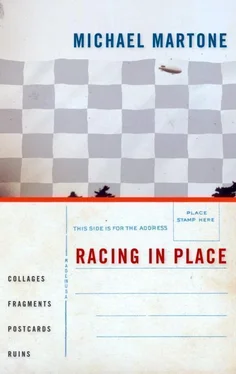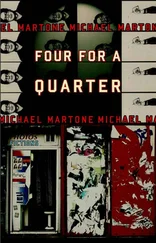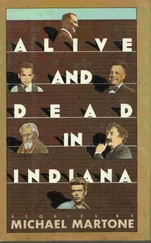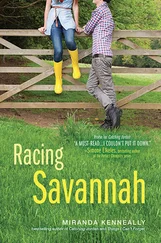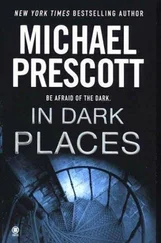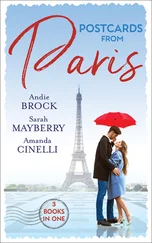It reminded me of another local miracle I witnessed years before, while trudging across the bleak campus. A cloud of Monarch butterflies navigating their migration to Mexico suddenly saturated that grassy strip of mall, oriented north to south, where I slouched toward class. I was, for a moment, completely engulfed, cocooned by their swarming. The raining fall of spring flower blossoms. But they didn't land, continuing instead to swirl and dance, so many I thought the flutter of their wings had reached a mass critical enough to create an entirely new sound only I could hear. A flap perhaps. Magic seems to lodge somewhere else for those who live in the lee of the lower Lakes.
Blue Bridge
When I was home, I borrowed my mother's car, a bright red Volkswagen Beetle, and drove it along the end moraine of the last continental glacier from the most recent Ice Age. I left my father convalescing in Fort Wayne, bent over a thousand-piece puzzle, depicting, when complete, a still life of fruit and flowers. In the borrowed Beetle, my mother had arranged her own bouquet of plastic black-eyed Susans in a vase that was strange standard dashboard equipment. The road, like a river, skirted the floodplain of the Wabash, meandering from the moraine, down into the valley, over the running stream, then out onto the black bottomland and back. I was sailing.
Once, this was the bed of an ancient inland sea, a vast washout field from a stalled glacier, a sheet of water spreading out. I tacked; I reached. I thought of stories. Of "In the Heart of the Heart of the Country," of course, my destination, the landscape, which I was again reading and reiterating on my way to Brookston. I thought of a story I wrote years ago, under that other story's influence, about a dairy farmer on this very road heading toward, in mind and body, an absent lover, his absent love. The daisies clouded the dash, obscuring the dials. She loves me. She loves me not. She loves me. Suddenly I came to a truss bridge, freshly painted a cheerful primary blue, the only color in the landscape save for my little red car, its cargo of yellow daisies. The bridge was only wide enough for one car. I waited at its entrance. A traffic light regulated the one-way flow, the one-at-a-time passage. I waited. No car was waiting on the other side. I thought of the valves of the heart, the hydraulics of locks and dams, alternating current, the magnetism of love. I imagined a ghost car approaching, an alternate universe, another journey from another time. My farmer in his Continental. Gass on his way to class, on his way home. Me, returning from another mission through the same pages of these familiar fields. The light turned green and I eased out the clutch, weighed anchor, made way into this parade of other possibilities.
Bernoulli
What did I know of sailing? I am from Indiana, land-locked and a long way from the sea. Yes, there is that pesky easement to Lake Michigan, a seeping valve in its heart, but I grew up a long way from water. I like the ending to the Odyssey, where the hero is ordered to walk inland with an oar until the natives he meets no longer recognize it for what it is, mistaking it for a flail. Why are you carrying a flail? That would be me, the land-locked boy, asking. I knew nothing about sailing, nothing about tacking or heeling or coming about. I figured that a sail caught the wind, that the boat got pushed from behind. You could only sail one way, in the direction the wind was blowing. I knew nothing of the principle of lift, of wing. Not until later did I understand that you could sail into the wind, or almost in that direction, in any direction, really, as long as you had a wind. I finally understood the paradox of the wind. When it is most difficult to move, when the wind is in your face, it feels as if you are moving the most, an illusion created in the confusion of your senses. Inching forward, almost standing still, makes for the most interesting sailing; such tacking amplifies the sensation of motion, moving to get into the position to move.
One must read "In the Heart of the Heart of the Country" in a tactful way, sometimes skipping, forward and back, from one square of prose to the next. It isn't so much a series of moments, but a set, a slide show, a contact sheet, a webpage of thumbnails. They can be shuffled, reordered, repeated. I swear when I read the story in different anthologies, sections are missing, and new ones added. Each section floats independent of the others, yet all are borne by the same breeze, the conflicting currents. Paragraphs, like continents, drift apart and together from reading to reading. That can't be right. But it does feel right.
Boston
Once, I found William H. Gass. I was working in Boston, and he was visiting to lecture. I had been recruited to introduce the concluding session of his two-day gig. I was from Indiana, an oddity, and had told everyone in Boston about wandering around that state in search of B., a small town fastened to a cornfield. This admission made me stranger still to my colleagues in Boston, which is the hub of the universe. Quaint to be from such a place, Indiana. It might as well be India. And strangely touching, this quixotic search for an imaginary place. "You simply must introduce our guest," they said and put me on the spot.
Gass was nothing like I had imagined. He had bored the local audience with his current passion, a slide show of amateur snapshots glossed, glazed with his lovely language about the language. Each slide launched an elaborate essay about itself, prompted by a pedestrian picture of, say, an anonymous doorway in some nameless street of an unidentified town in a vague country. I think he was promoting an aesthetic of the ordinary, an anti-aesthetic, but he couldn't help himself. There was a world in each photograph as there are worlds within each word. I have sailed the seas to see.
By the second night, the crowd had contracted to stragglers and hardcore fans. In my introduction, I related the history of my voyages in search of B. I sailed the seas, I said. And I drew their attention to one of the last sections of "In the Heart of the Heart of the Country." Entitled "Church," it recreates a moment of a high-school basketball game in Indiana.
Then the yelling begins again, and then continues: fathers, mothers, neighbors joining in to form a single pulsing ululation-a cry of the whole community-for in the gymnasium each body becomes the bodies beside it, pressed as they are together, thigh to thigh, and the same shudder runs through all of them, and runs toward the same release. Only the ball moves serenely through this dazzling din. Obedient to law it scarcely speaks but caroms quietly and lives at peace.
I had wanted to make a point, I guess, pointing out the contrast between the things in rest and in motion, the agitation of rest and the quiescence of movement. It's how I feel I felt driving aimlessly and with an aim through the space of Indiana. It is how I felt, I feel, reading the story in which nothing and everything seems, seemed to happen. I sing of what is past, or passing, or to come.
On the way to the reception, Gass told me that my expeditions in search of B. might be beside the point, that the place did not exist. Or existed only in the story, like a variable in an equation. X. B.
"I knew that," I said, "I knew, know that."
Baptism
Robert Indiana, the artist who sculpted LOVE, lives on the island of Vinalhaven, a jigsaw puzzle piece of rock off the coast of Maine. Hidden in that rusting fragment of the alphabet that stands for LOVE is the heart-shaped cutout in the sculpture's heart. It is made by the V-ed rays of the V's angled legs and their curving serifed caps curving inward to form that other, shallower V. What was his real name, Robert Indiana, like Gass, another architect of loose associations between the state of Indiana and the state of love, of longing?
Читать дальше
